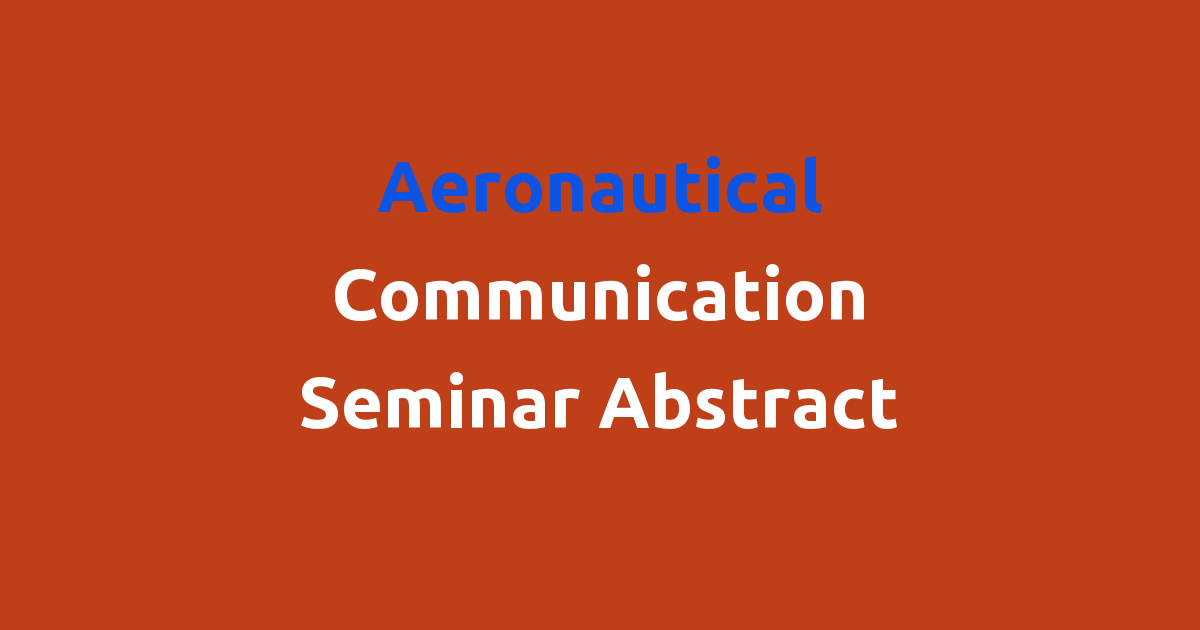Abstract: Exploring the advancements in communication systems for the aeronautical industry
Introduction
Aeronautical communication plays a crucial role in ensuring the safety and efficiency of air traffic. With the increasing number of flights taking off and landing at airports around the world, it becomes imperative to have a robust communication system in place to facilitate smooth coordination between pilots, air traffic controllers, and ground staff. This seminar abstract focuses on exploring the challenges in the existing aeronautical communication system and proposing a new system that addresses these challenges.
Problem Statement
The existing aeronautical communication system relies heavily on voice communication over radio frequencies. While this system has served the aviation industry well for many years, it has its limitations. One of the main drawbacks of this system is the potential for miscommunication due to factors such as language barriers, accent differences, and background noise. This can lead to errors in instructions and jeopardize the safety of flights.
Existing System
The current aeronautical communication system consists of VHF radios that operate on specific frequencies assigned for air traffic control. Pilots communicate with air traffic controllers using standard phraseology and protocols to ensure clarity and accuracy. However, this system is prone to interference from other radio users, which can result in confusion and delays in communication.
Disadvantages
– Miscommunication due to language barriers and accent differences
– Interference from other radio users leading to confusion
– Background noise affecting the clarity of communication
– Limited bandwidth for transmitting data and voice simultaneously
Proposed System
The proposed system aims to address the shortcomings of the existing aeronautical communication system by incorporating advanced technology such as data link communication and digital voice transmission. Data link communication allows for the transfer of text messages and data between aircraft and ground stations, reducing the reliance on voice communication. Digital voice transmission ensures clear and consistent audio quality, improving the accuracy of instructions.
Advantages
– Improved clarity and accuracy of communication
– Reduced potential for miscommunication
– Enhanced safety and efficiency of air traffic management
– Increased bandwidth for transmitting data and voice simultaneously
Features
The new aeronautical communication system will feature:
– Data link communication for text messages and data transfer
– Digital voice transmission for clear audio quality
– Encryption protocols to ensure secure communication
– Automatic dependent surveillance-broadcast (ADS-B) for real-time aircraft tracking
– Integration with existing air traffic management systems for seamless coordination
Conclusion
In conclusion, the proposed aeronautical communication system presents a significant advancement in the field of aviation communication. By leveraging cutting-edge technology and addressing the limitations of the existing system, this new system promises to enhance the safety and efficiency of air traffic management. With the implementation of data link communication, digital voice transmission, and other features, pilots, air traffic controllers, and ground staff can communicate effectively and securely, leading to a smoother operation of air traffic. It is essential for the aviation industry to embrace these advancements and invest in the modernization of aeronautical communication systems to meet the growing demands of air travel in the 21st century.

